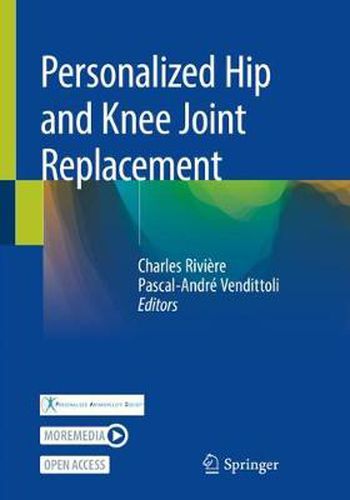Readings Newsletter
Become a Readings Member to make your shopping experience even easier.
Sign in or sign up for free!
You’re not far away from qualifying for FREE standard shipping within Australia
You’ve qualified for FREE standard shipping within Australia
The cart is loading…






This open access book describes and illustrates the surgical techniques, implants, and technologies used for the purpose of personalized implantation of hip and knee components. This new and flourishing treatment philosophy offers important benefits over conventional systematic techniques, including component positioning appropriate to individual anatomy, improved surgical reproducibility and prosthetic performance, and a reduction in complications.
The techniques described in the book aim to reproduce patients’ native anatomy and physiological joint laxity, thereby improving the prosthetic hip/knee kinematics and functional outcomes in the quest of the forgotten joint. They include kinematically aligned total knee/total hip arthroplasty, partial knee replacement, and hip resurfacing. The relevance of available and emerging technological tools for these personalized approaches is also explained, with coverage of, for example, robotics, computer-assisted surgery, and augmented reality.
Contributions from surgeons who are considered world leaders in diverse fields of this novel surgical philosophy make this open access book will invaluable to a wide readership, from trainees at all levels to consultants practicing lower limb surgery
$9.00 standard shipping within Australia
FREE standard shipping within Australia for orders over $100.00
Express & International shipping calculated at checkout
This open access book describes and illustrates the surgical techniques, implants, and technologies used for the purpose of personalized implantation of hip and knee components. This new and flourishing treatment philosophy offers important benefits over conventional systematic techniques, including component positioning appropriate to individual anatomy, improved surgical reproducibility and prosthetic performance, and a reduction in complications.
The techniques described in the book aim to reproduce patients’ native anatomy and physiological joint laxity, thereby improving the prosthetic hip/knee kinematics and functional outcomes in the quest of the forgotten joint. They include kinematically aligned total knee/total hip arthroplasty, partial knee replacement, and hip resurfacing. The relevance of available and emerging technological tools for these personalized approaches is also explained, with coverage of, for example, robotics, computer-assisted surgery, and augmented reality.
Contributions from surgeons who are considered world leaders in diverse fields of this novel surgical philosophy make this open access book will invaluable to a wide readership, from trainees at all levels to consultants practicing lower limb surgery